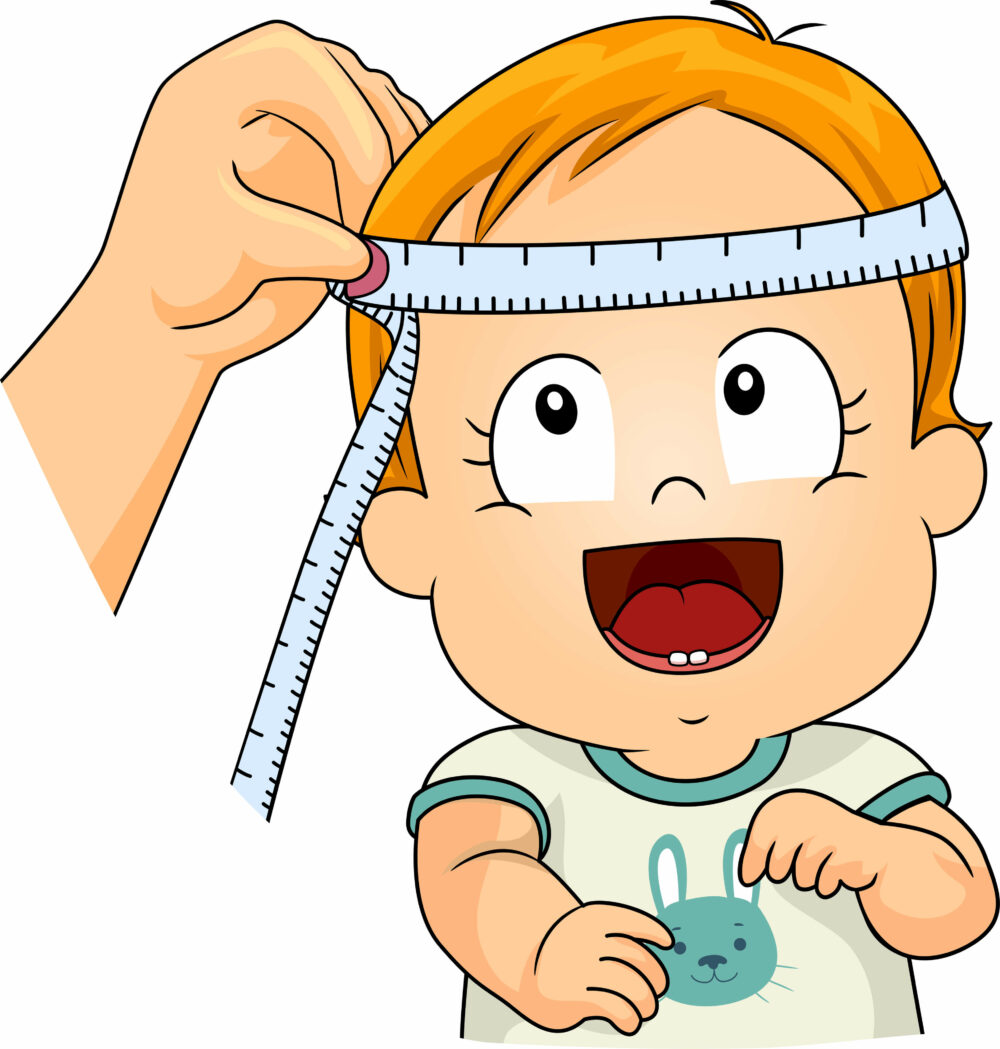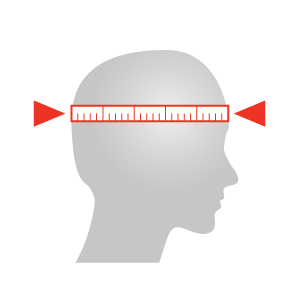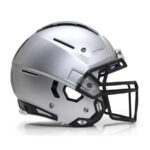To measure your head for a bike helmet, use a flexible tape measure. Wrap it around your head, just above your eyebrows and ears.
Choosing the right bike helmet ensures safety and comfort. Accurate measurements are crucial for finding the perfect fit. An ill-fitting helmet can compromise protection and cause discomfort. Knowing how to measure your head correctly will help you select the best helmet size.
This guide will walk you through the process, making it easy and straightforward. With the right tools and techniques, you can ensure a snug and secure fit. Proper helmet sizing enhances your riding experience and keeps you safe. Investing time in measuring your head accurately pays off in long-term safety and comfort.

Credit: www.youtube.com
Importance Of Proper Helmet Fit
Wearing a helmet that fits well is crucial. A proper fit ensures maximum safety and comfort. It reduces the risk of injury during accidents. Let’s explore the benefits of a well-fitted helmet.
Safety Benefits
A helmet that fits well protects your head effectively. It stays in place during an impact. This reduces the chance of serious injuries. Below are some key safety benefits:
- Reduces head trauma by absorbing shock.
- Prevents helmet slippage which can expose your head.
- Distributes impact forces evenly across the skull.
Comfort Factors
Comfort is also essential for an enjoyable ride. A well-fitted helmet ensures you can focus on riding. Here are some comfort factors to consider:
| Comfort Factor | Description |
|---|---|
| Padding | Provides cushioning and reduces pressure points. |
| Ventilation | Allows air to flow, keeping your head cool. |
| Weight | A lighter helmet reduces neck strain. |
Tools You Will Need
Choosing the right bike helmet is crucial for safety. To ensure a perfect fit, you need to measure your head correctly. Here are the essential tools you will need to get an accurate measurement.
Measuring Tape
A measuring tape is essential for this task. Use a flexible cloth tape for best results. Wrap the tape around your head, just above your eyebrows and ears. Note the measurement in centimeters or inches. This ensures you get the right helmet size.
Mirror
A mirror helps you see what you are doing. Stand in front of a mirror while measuring your head. This allows you to make sure the tape is level and not twisted. A clear view helps you get an accurate reading.
Helper
A helper can make the process easier. Ask a friend or family member to assist you. They can hold the tape and ensure it is straight. A second pair of hands ensures a precise measurement.
| Tool | Purpose |
|---|---|
| Measuring Tape | For measuring the circumference of your head |
| Mirror | To ensure the tape is level and straight |
| Helper | To assist and ensure accuracy |
Preparing For Measurement
Measuring your head for a bike helmet is crucial for safety. A well-fitting helmet can protect you during accidents. Let’s look at how to prepare for this measurement.
Hair Considerations
Hair can affect your helmet size. Make sure your hair is styled as you usually wear it when biking. If you have long hair, tie it up neatly. This ensures the helmet fits snugly.
If you have short hair, keep it natural. Avoid any extra volume that may change your head’s circumference. Consistent hair styling helps get an accurate measurement.
Removing Accessories
Before measuring, remove all accessories. Take off hats, headbands, and clips. These items can add unnecessary bulk. They may give a false measurement.
Keep your head free of distractions. Ensure it’s clean and dry. This helps the tape measure sit correctly. A clear surface ensures a true reading.
Measuring Your Head
Finding the perfect bike helmet starts with measuring your head. A well-fitted helmet ensures maximum safety and comfort. This guide will help you measure your head accurately for the right helmet size.
Finding The Right Spot
First, locate the right spot on your head. Use a soft measuring tape. Position the tape just above your eyebrows. It should also sit above your ears.
This is the widest part of your head. It’s where the helmet will sit. Make sure the tape is level all the way around.
Taking The Measurement
Next, take the actual measurement. Wrap the tape around your head. Ensure it is snug but not tight. Read the measurement where the tape meets.
Record this measurement in centimeters. Most helmet sizes are in centimeters. If you don’t have a soft tape, use a string. Measure the string length with a ruler afterward.
Use this measurement to find your helmet size. Refer to the helmet sizing chart provided by the manufacturer. Different brands may have slight size variations.
Helmet Sizing Chart Example
| Head Circumference (cm) | Helmet Size |
|---|---|
| 52-54 | Small |
| 55-58 | Medium |
| 59-62 | Large |
Remember, the right helmet size ensures better protection. So, take your time to measure correctly.
Interpreting The Measurement
After measuring your head, understanding the measurement is crucial. This will help you choose the right bike helmet size. A well-fitting helmet ensures safety and comfort. Let’s dive into how to interpret your measurement.
Helmet Sizing Charts
Helmet sizing charts are your best friend. They guide you to the perfect fit. Find your head circumference on the chart. Match it with the corresponding helmet size. Here’s a simple example:
| Head Circumference (cm) | Helmet Size |
|---|---|
| 51-55 | Small |
| 55-59 | Medium |
| 59-63 | Large |
Always refer to the manufacturer’s sizing chart. Each brand might differ slightly.
Brand Variations
Not all brands follow the same sizing. A medium in one brand might be a large in another. Always check the specific brand’s chart. Here are steps to ensure a good fit:
- Measure your head circumference accurately.
- Refer to the brand’s specific sizing chart.
- Try the helmet on, if possible.
- Ensure there are no pressure points.
Some brands offer adjustable helmets. These can be fine-tuned for a perfect fit. Look for models with an adjustable dial or padding.
Remember, a good fit is essential for protection. Never settle for an ill-fitting helmet.
Trying On Helmets
After measuring your head, it’s time to try on helmets. This step is crucial for finding the perfect fit. A well-fitted helmet ensures safety and comfort. Follow these steps to make sure your helmet fits just right.
Adjusting Straps
First, put the helmet on your head. Make sure it’s level and covers your forehead. Now, adjust the straps. The side straps should form a “V” shape under your ears.
- Open the buckle and lengthen the straps.
- Place the helmet on your head.
- Adjust the side straps to form a “V” shape.
- Make sure the “V” sits just under your ears.
- Close the buckle and tighten the chin strap.
The chin strap should be snug but not too tight. You should be able to fit one or two fingers between the strap and your chin.
Checking Fit
After adjusting the straps, check the helmet’s fit. Shake your head from side to side. The helmet should stay in place.
- Move your head from side to side.
- Make sure the helmet doesn’t move.
- Check the front and back of the helmet.
- Ensure it covers your forehead properly.
A well-fitted helmet should feel snug but comfortable. If the helmet moves, adjust the straps again or try a different size. Always prioritize safety and comfort.
Common Mistakes To Avoid
Properly measuring your head for a bike helmet is crucial for safety. Yet, many people make common mistakes that lead to poor fit and discomfort. Let’s explore these mistakes so you can avoid them.
Ignoring Hair Volume
Many forget to account for their hair’s volume. This is important if you have thick or long hair. Measure your head while wearing your hair as you would during a ride. For those with long hair, tie it up as you would under the helmet. This ensures an accurate measurement.
Overlooking Strap Adjustment
Another common mistake is not considering strap adjustment. A helmet should fit snugly, and the straps play a key role. Ensure the straps form a “V” shape under your ears. This helps secure the helmet properly. Adjust the chin strap so only one or two fingers fit beneath it. This prevents the helmet from moving during a ride.
| Common Mistakes | Impact |
|---|---|
| Ignoring Hair Volume | Poor fit, discomfort |
| Overlooking Strap Adjustment | Helmet movement, reduced safety |
- Measure your head with your usual hairstyle.
- Ensure straps form a “V” under your ears.
- Adjust chin strap for a snug fit.

Credit: billyscrashhelmets.co.uk
Maintaining Helmet Fit
Keeping your bike helmet well-fitted is crucial for safety. A good fit ensures maximum protection. Here, you’ll learn how to maintain that fit.
Routine Checks
Regular checks keep your helmet in top shape. Follow these simple steps:
- Check the straps. Make sure they are tight.
- Inspect the foam padding. It should be intact.
- Look for cracks. A cracked helmet needs replacement.
- Test the buckles. They must snap securely.
When To Replace
A helmet’s lifespan is not forever. You should replace it in these situations:
- After an impact. Even small crashes can damage it.
- If it shows signs of wear. Old helmets are less protective.
- Every 5 years. Materials can degrade over time.
| Reason | Action |
|---|---|
| Impact | Replace immediately |
| Wear and tear | Inspect and replace |
| Age | Replace every 5 years |

Credit: www.cyclesprog.co.uk
Frequently Asked Questions
How Do I Measure My Head For A Helmet?
To measure your head for a helmet, use a flexible tape measure. Wrap it around your head, just above your eyebrows and ears. Ensure the tape is level. Note the measurement in centimeters or inches.
What Size Bike Helmet Do I Need?
Helmet sizes vary by brand. Check the size chart on the helmet brand’s website. Match your head measurement to the size chart to find the correct fit.
Can I Use A String To Measure My Head?
Yes, you can use a string. Wrap the string around your head, then measure the string length with a ruler. This gives you an accurate head size.
Why Is Helmet Fit Important?
A proper helmet fit ensures maximum protection during a crash. A well-fitted helmet stays in place and absorbs impact better, reducing injury risk.
Conclusion
Measuring your head for a bike helmet ensures a safe and comfortable fit. Follow the steps for accurate measurements. A well-fitted helmet can prevent injuries and enhance your biking experience. Prioritize safety by taking the time to measure correctly. Enjoy your rides with confidence and peace of mind.


